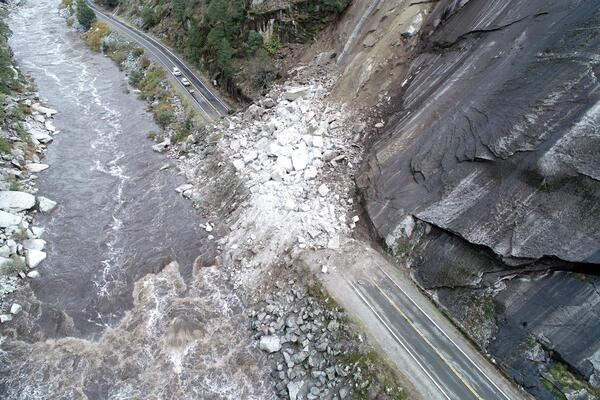Heavy rainfall on the afternoon of August 3, 2022 triggered a debris flow in the Hermits Peak-Calf Canyon burn area. A USGS monitoring station installed in the drainage basin captured video footage of the flow. This clip of the video shows the flow from 13:43:00 MDT to 13:45:32 MDT.
0:00 (13:43 MDT) Start of Video





















